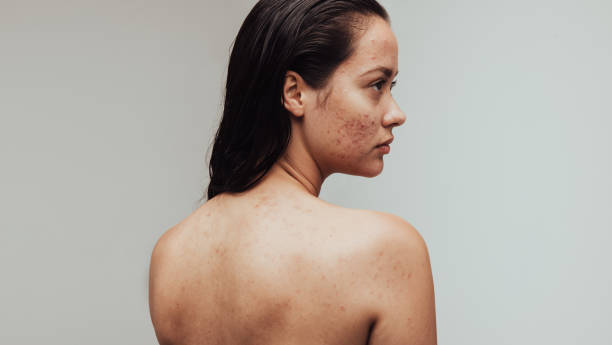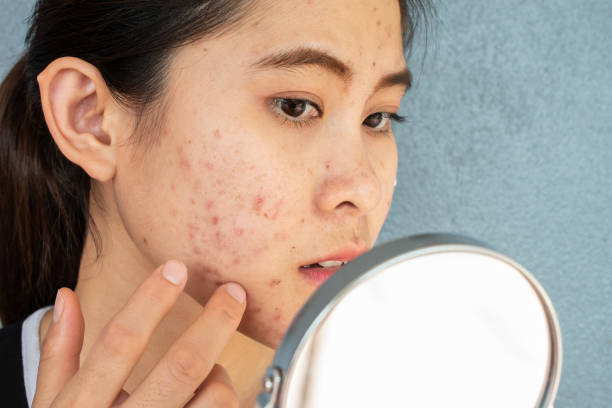The best ingredients for treating acne often depend on the type and severity of your acne. Here are some of the most effective ingredients commonly recommended:
- Salicylic Acid:
- How it works: Exfoliates the skin and helps to clear out pores by dissolving dead skin cells. It’s particularly effective for blackheads and whiteheads.
- Best for: Mild acne, clogged pores, and oily skin.
- Benzoyl Peroxide:
- How it works: Kills acne-causing bacteria (Propionibacterium acnes) and helps reduce inflammation. It can also dry out excess oil.
- Best for: Inflammatory acne (like pustules and cysts) and moderate to severe acne.
- Retinoids (e.g., Retinol, Adapalene):
- How it works: Promotes cell turnover, prevents pores from clogging, and reduces inflammation. It also has anti-aging benefits.
- Best for: All types of acne, particularly comedonal acne, and for people looking to improve skin texture and reduce signs of aging.
- Alpha Hydroxy Acids (AHAs) like Glycolic Acid and Lactic Acid:
- How it works: Exfoliates the skin surface, helping to remove dead skin cells and improve skin texture. They also help fade post-acne marks.
- Best for: Mild acne, particularly those dealing with acne scars or hyperpigmentation.
- Tea Tree Oil:
- How it works: Has natural antibacterial properties and can help reduce inflammation. It’s a more natural alternative to benzoyl peroxide.
- Best for: Mild to moderate acne, particularly if you prefer a natural remedy.
- Niacinamide:
- How it works: Reduces inflammation, controls oil production, and can help improve skin barrier function. It also helps with post-inflammatory hyperpigmentation.
- Best for: All types of acne, especially for those with sensitive skin.
- Sulfur:
- How it works: Reduces oiliness and helps dry out the surface of the skin to absorb excess oil. It also has antibacterial properties.
- Best for: Mild to moderate acne, particularly for those with oily skin.
- Azelaic Acid:
- How it works: Reduces inflammation, kills bacteria, and can help fade dark spots left by acne.
- Best for: Mild to moderate acne, rosacea-related acne, and post-inflammatory hyperpigmentation.
It’s important to note that some of these ingredients can be drying or irritating, especially when you first start using them. It’s often recommended to start with lower concentrations and gradually increase as your skin builds tolerance. Additionally, combining some of these ingredients may provide more effective results, but it’s best to do so under the guidance of a dermatologist to avoid irritation or adverse reactions.

Are acne peels safe?
Acne peels can be safe and effective when used appropriately, but there are some important considerations to keep in mind:
Types of Acne Peels
- Chemical Peels:
- Light Peels: Often use alpha-hydroxy acids (AHAs) like glycolic acid or lactic acid, or beta-hydroxy acids (BHAs) like salicylic acid. These are generally safe for mild acne and are less likely to cause severe irritation.
- Medium Peels: May use trichloroacetic acid (TCA) or stronger concentrations of AHAs/BHAs. These penetrate deeper into the skin and can be more effective for moderate acne and acne scars but come with a higher risk of side effects.
- Deep Peels: Use strong acids like phenol. These are rarely used for acne treatment due to the significant risks involved, including scarring and prolonged recovery time.
- Enzyme Peels:
- These use natural enzymes to exfoliate the skin. They are generally milder than chemical peels and can be a good option for sensitive skin or those with mild acne.
Benefits of Acne Peels
- Exfoliation: Helps remove dead skin cells and unclog pores.
- Reducing Acne Scars: Medium peels can improve the appearance of post-acne scars.
- Evening Skin Tone: Peels can help reduce hyperpigmentation and improve overall skin texture.
Risks and Side Effects
- Irritation and Redness: Especially with stronger peels or if left on the skin too long.
- Peeling and Flaking: Expected as part of the process, but can be uncomfortable.
- Increased Sun Sensitivity: Your skin becomes more sensitive to the sun after a peel, increasing the risk of sunburn and hyperpigmentation. Using sunscreen is crucial.
- Hyperpigmentation or Hypopigmentation: Some people, particularly those with darker skin tones, may experience changes in skin color, especially if the peel is too strong or if proper aftercare is not followed.
- Scarring: Rare but possible, especially with deeper peels.
Safety Tips
- Consult a Dermatologist: Before undergoing any peel, especially if you have moderate to severe acne, it’s important to consult with a dermatologist. They can recommend the appropriate type of peel for your skin type and condition.
- Start with a Professional: If you’re new to peels, it’s safest to have your first treatments done by a professional rather than trying them at home.
- Patch Test: Always do a patch test before applying a peel to your entire face to ensure you don’t have an adverse reaction.
- Follow Aftercare Instructions: Proper aftercare is crucial for avoiding complications. This usually includes using gentle skincare products, avoiding sun exposure, and moisturizing the skin well.
- Frequency: Do not overuse peels; follow the recommended frequency to avoid damaging your skin barrier.
In summary, acne peels can be safe and beneficial when used correctly and with appropriate care. However, due to the potential risks, especially with stronger peels, it’s important to proceed with caution and seek professional advice when necessary.
